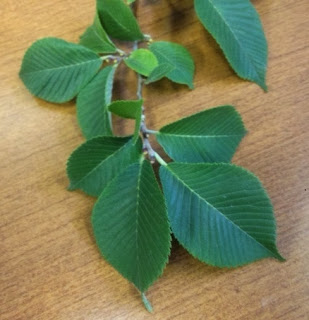 |
| Bald Cypress foliage |
As Emerald Ash Borer steamrolls through our shade tree population we need to consider replacement choices. As one of my professors once said, "Nature abhors a monoculture." So, maybe our takeaway from the ash carnage should be about creating diversity and not overplanting any one species. A mixed forest, urban or otherwise, carries far less potential for total destruction from any insect or disease.
Let's not get caught with our plants down (literally) again. A few top-of-mind options to consider adding to your neighborhood canopy:
 |
| Autumn Blaze Maple |
 |
| Bald Cypress |
Elm (Ulmus) Thanks to the hard work of hybridizers, especially at Morton Arboretum, there's a whole new world of disease resistant elms awaiting you. To highlight a couple, take a look at 'Triumph' with its broad oval/vase-shape. 'Triumph' wears glossy, Dutch Elm disease-resistant dark green foliage. The fall color is yellow, and the arching habit desired by so many seems to develop as the tree matures to 50-60' tall, 45' wide. 'Emerald Sunshine' is more dwarf, topping out at 35', spreading to 25'. It's also DED-resistant, but is reported to have Elm leaf beetle resistance, too. Nice bonus!
 |
| Emerald Sunshine Elm foliage |
Ginkgo (Ginkgo biloba), like a teenager, can sometimes be lanky until it grows and fills out. What a shame so many people overlook this amazing tree because it isn't a "perfect" shape when they first see it in the nursery. The gorgeous, fan-shaped dark green leaves are completely unique in the entire plant kingdom. In fall, they acquire a knockout bright gold fall color. While the growth rate is moderate, a Ginkgo's total indifference to insects and disease is a huge asset. But beware- buy only grafted male varieties ('Autumn Gold', 'Magyar' and 'Princeton Sentry', for example) that don't gift you with the female Ginkgo's ill-smelling fruit. A Ginkgo is a real trooper under even the most adverse conditions.
 |
| Purple Fountain Beech |
